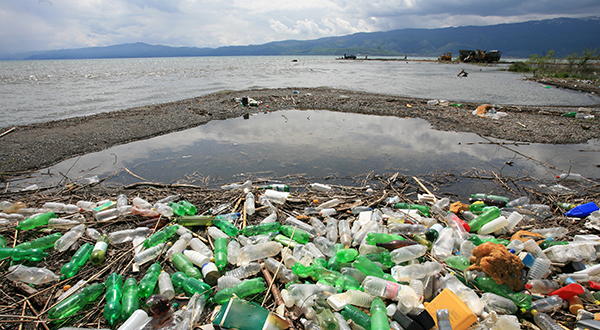The Convention on Biological Diversity has published report highlighting that the number of marine species affected by marine debris has risen to 817 when effects such as ingestion, entanglement, ghost fishing, dispersal by rafting and provision of new habitat are all considered.
Key Findings 1. More than 800 marine and coastal species are affected by marine debris through ingestion, entanglement, ghost fishing and dispersal by rafting as well as habitat effects. New types of impacts are highlighted along with new records of habitats or species that have been affected. Socio-economic impacts are also discussed. There are a total of 154 new species records since the 2012 review, representing a 23 per cent increase in the total number of species affected. The types of impacts or interactions include: ingestion and entanglement, the effects of microplastics, the effects of persistent, bio-accumulative and toxic substances, marine debris as a new novel habitat, dispersal via rafting and the transport of invasive alien species, and habitat or ecosystem-level effects. Marine debris is usually defined as any persistent, manufactured or processed solid material discarded, disposed of, or abandoned in the marine and coastal environment. Records of the most common items found in surveys and clean-ups clearly show that marine debris is dominated by plastic items both in shallow and deeper waters. The top ten debris items recorded by the 2013 International Coastal Cleanup were, in descending order: cigarette butts, plastic food wrappers, plastic beverage bottles, plastic bottle caps, straws and stirrers, plastic grocery bags, glass beverage bottles, other plastic bags, paper bags and beverage cans. Seven of these items are made of plastic. Although the evidence for the impacts of marine debris on marine and coastal biodiversity has grown considerably in the last few decades, there are still significant gaps in our knowledge and understanding of debris in the marine environment and how it affects coastal and marine organisms, communities and ecosystems Main Solutions and Key Approaches to address Marine Debris The following main solutions to address land-based sources of plastic marine debris are well known: An additional solution is to support research and development of new materials that are non-toxic, truly compostable, fully biodegradable alternatives to conventional plastics, with comparable economic properties and performance characteristics Further details may be found in the report herebelow Source: CBD
2. More than 500 marine and coastal species are affected by ingestion of, or entanglement in, marine debris, which includes the effects of ghost fishing.
3. The number of seabird and marine mammal species affected by marine debris ingestion or entanglement is steadily rising.
4. There is increasing recognition of the impact of ghost fishing, with both ecological and socio-economic effects being reported.
5. Microplastics are present in all marine habitats and from the ocean surface to the seabed, and are available to every level of the food web, from primary producers to higher trophic levels.
6. Microplastics are also providing a new habitat in the oceans for microbial communities, although the effects on ocean ecosystems and processes are not yet understood.
7. Although laboratory-based studies have indicated that plastics containing hazardous chemicals can have a detrimental effect on the health of marine organisms, this phenomena has not been clearly shown in the marine environment.































































